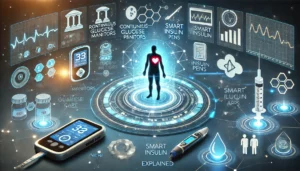alt=”Description of image content” style=”width:650px; height:auto;”/>
“`html
Revolutionizing Hypertension Management with RPM for Better Patient Outcomes
In today’s fast-evolving healthcare landscape, managing chronic conditions such as hypertension is more critical than ever. With a rising global burden of cardiovascular diseases, the demand for effective and efficient management strategies has never been higher. Among these strategies, Remote Patient Monitoring (RPM) is emerging as a game-changer, particularly in tracking and controlling blood pressure.
Understanding Remote Patient Monitoring (RPM)
Remote Patient Monitoring is a burgeoning field in healthcare technology that involves using digital tools to monitor patients’ health data outside traditional clinical settings. RPM technologies enable healthcare professionals to collect real-time data, ensuring timely interventions and promoting proactive health management.
The Role of RPM in Hypertension Management
Hypertension, or high blood pressure, is a silent killer affecting millions globally. Despite being a preventable condition, its management remains elusive for many. This is where RPM comes into play, offering an innovative solution by:
- Providing continuous data collection, enabling healthcare providers to track blood pressure trends over time.
- Allowing immediate feedback and modifications of treatment plans based on up-to-date information.
- Empowering patients through regular participation in their health care, fostering better compliance and lifestyle changes.
How RPM Enhances Value-Based Care
Value-based care is fundamentally about improving patient outcomes while managing costs. RPM is a potent tool in this context, as it aligns perfectly with the principles of value-based care.
- Improved Patient Engagement: By providing patients with devices to monitor their blood pressure at home, RPM fosters a sense of accountability and active participation in health care.
- Real-time Monitoring: Continuous tracking helps in identifying potential health risks early, allowing for timely interventions to prevent complications.
- Cost-effective Care: By reducing the need for frequent in-person visits, RPM significantly cuts down healthcare costs, making it a financially viable option for both patients and providers.
Transforming Patient Outcomes via Blood Pressure Control
Effective blood pressure management is crucial for preventing complications such as stroke, heart attack, and kidney failure. RPM systems play a pivotal role in achieving this by:
- Accuracy: High-precision devices provide reliable data, enabling better clinical decisions.
- Accessibility: Patients, especially in remote areas, gain access to continuous monitoring without the need for frequent travel.
- Personalization: RPM allows for tailored treatment plans based on individual health patterns, improving overall treatment efficacy.
The Impact of RPM on Healthcare Providers
Beyond its benefits to patients, RPM also has a transformative impact on healthcare providers. By integrating RPM into practice, providers can see improvements in:
- Efficient Workflow: Automating data collection reduces administrative burdens, allowing clinicians to focus more on patient care.
- Quality of Care: Real-time data delivers insights that lead to more accurate diagnosis and treatment plans.
- Patient Satisfaction: By offering a more personalized and responsive care model, patient trust and satisfaction are positively impacted.
Challenges and Considerations for RPM Implementation
While RPM offers promising advancements, there are challenges that health systems must navigate, including:
- Data Security: Ensuring patient data privacy and security is paramount in digital health ecosystems.
- Technology Adoption: Both patients and healthcare providers must be adequately trained to maximize the potential of RPM technologies.
- Reimbursement and Policy: Clear policies and reimbursement models are necessary to support RPM’s widespread adoption.
Looking Forward: The Future of RPM in Hypertension Management
As healthcare continues to innovate, RPM is poised to become an integral component of hypertension management. Its ability to provide comprehensive and patient-centered care makes it a valuable ally in the fight against high blood pressure. The future will likely see further advancements in RPM technologies, enhancing its capabilities and accessibility.
Healthcare professionals, policy makers, and technology developers must work collaboratively to overcome the current challenges and ensure the successful implementation of RPM in mainstream medical practice. As these efforts continue, the health outcomes for millions of patients are set to improve significantly, heralding a new era in hypertension management.
In conclusion, RPM stands at the forefront of revolutionizing hypertension management. By offering a blend of technology, patient empowerment, and clinical precision, it not only enhances value-based care but also transforms patient outcomes for the better. The journey to widespread RPM adoption is still ongoing, but its potential to revolutionize health care is undeniably immense.
“`
This structured content adheres to SEO practices and provides comprehensive information on the impact of RPM in hypertension management.



